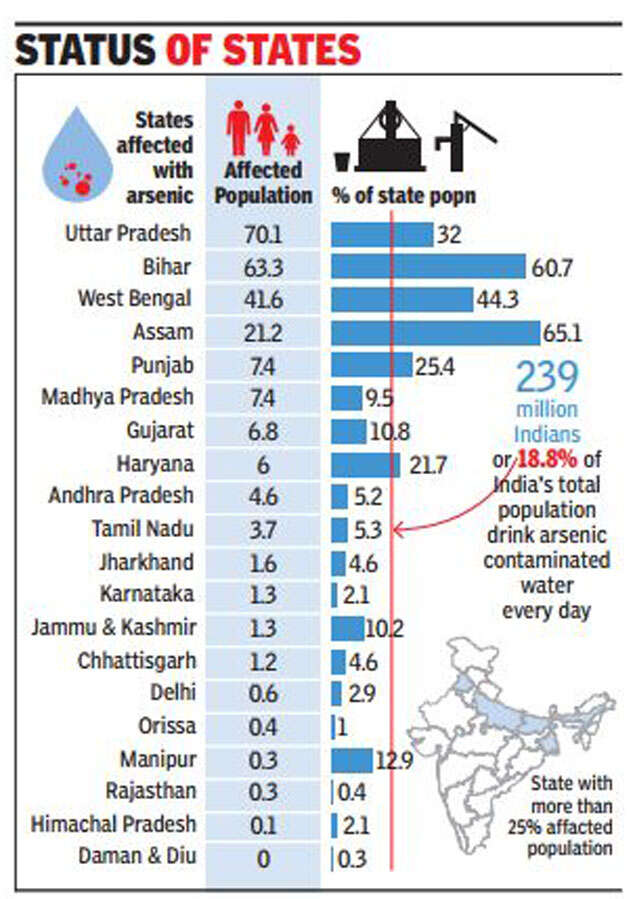Note4Students
From UPSC perspective, the following things are important :
Prelims level: Arsenic poisoning and its effects on food chain
Mains level: Groundwater contamination
As the geography of arsenic contamination spreads, there is an urgent need for governments to reorient mitigation measures. That’s because the focus till now has only been on drinking water, but new research says arsenic has contaminated our food chain.
Arsenic contamination of water

- Arsenic contamination in groundwater is one of the most crippling issues in the drinking water scenario of India.
- According to the latest report of the Central Ground Water Board (CGWB), 21 states across the country have pockets with arsenic levels higher than the BIS stipulated permissible limit of 0.01 milligram per litre (mg/l).
- The states along the Ganga-Brahmaputra-Meghna (GBM) river basin — Uttar Pradesh, Bihar, Jharkhand, West Bengal and Assam — are the worst affected by this human-amplified geogenic occurrence.
- In India, arsenic contamination was first officially confirmed in West Bengal in 1983.
- Close to four decades after its detection, the scenario has worsened.
- About 9.6 million people in West Bengal, 1.6 million in Assam, 1.2 million in Bihar, 0.5 million in Uttar Pradesh and 0.013 million in Jharkhand are at immediate risk from arsenic contamination in groundwater.
Effects of arsenic poisoning
- Long-term exposure to arsenic in drinking water can cause cancer in the skin, lungs, bladder and kidney. It can also cause other skin changes such as thickening and pigmentation.
- The likelihood of effects is related to the level of exposure to arsenic and in areas where drinking water is heavily contaminated, these effects can be seen in many individuals in the population.
- Increased risks of lung and bladder cancer and skin changes have been reported in people ingesting arsenic in drinking water at concentrations of 50 µg/litre, or even lower.
Affecting food
- Recent research says arsenic contamination in groundwater has penetrated the food chain.
- It eventually causes photo-accumulation of arsenic in the food crops, especially in the leaves, can emanate from contaminated water sprayed on them.
- Yet the focus remained on drinking water, and the affected regions became the primary stake-holder in the mitigation approach.
Way forward
- Mitigation measures — that are currently focused on drinking water — must have a more comprehensive approach to ensure arsenic-free water for drinking and agricultural products.
- That means that the government must check for arsenic in water used for agricultural produce.
- Both the Union and state governments must work toward facilitating research that can investigate the accumulation of arsenic in crops and addressing the agricultural concerns of the affected regions.
- They must watch out for arsenic percolation in the food chain and the possibilities of biomagnification.
- The government needs to also conduct a larger study on the arsenic contamination of our food chain and its health impacts to understand its spatial spread through the agricultural supply chain.
Get an IAS/IPS ranker as your 1: 1 personal mentor for UPSC 2024

